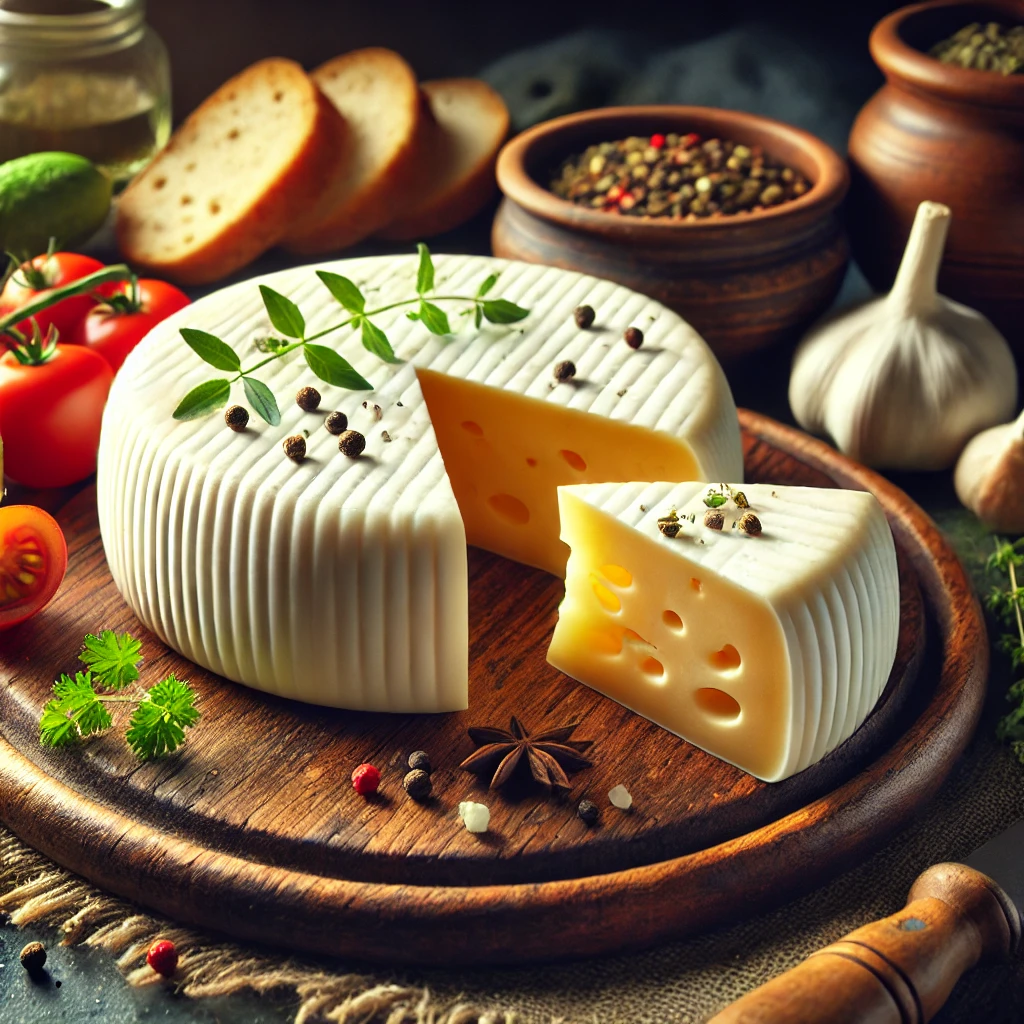Cheese lovers around the world often explore the classics — Parmesan, Brie, Gouda — but Georgia offers a cheese so distinct that it deserves its own spotlight: Sulguni. Salty, stretchy, aromatic, and naturally brined, Sulguni is one of the country’s most iconic foods, deeply tied to regional identity, ancient dairy methods, and Georgian hospitality.
For centuries, this cheese has been served at family feasts, countryside celebrations, and supra (traditional Georgian banquets). While it may look modest, Sulguni is a complex cheese with a bold personality — tangy yet smooth, elastic yet firm, and always pleasantly salty from its curing brine.
This guide explores Sulguni’s origins, flavour profile, how it’s made, and the various ways Georgians enjoy it today.
🌍 What Is Sulguni?
Sulguni (სულგუნი) is a Georgian brined, semi-soft cheese, traditionally made from:
-
Cow’s milk
-
Buffalo milk
-
Goat milk
-
Or a mixture of all three
It is one of Georgia’s most famous dairy products, second only to Imeretian cheese, from which Sulguni is often derived.
⭐ Key Characteristics:
-
Brined for several days
-
Stretch-curd technique similar to mozzarella
-
Elastic yet dense texture
-
Pronounced salty and sour-milk flavour
While many cheeses are aged to intensify flavour, Sulguni’s strength comes from its moisture, salt, and fermentation balance. It is typically consumed fresh or lightly matured, giving it its signature bite.
🧀 A Brief History
Sulguni originates from Samegrelo in western Georgia, a region known for lush landscapes and strong culinary traditions. Megrelian households have been producing Sulguni for hundreds of years, using techniques passed down between generations.
Originally, the cheese served as a way to preserve milk in warm climates. Brining allowed it to remain edible without refrigeration long before modern cooling existed.
Over time, Sulguni moved from rural dairy tables to:
-
Georgian restaurants
-
European specialty cheese counters
-
Global gourmet menus
Today, it is the national cheese of Georgia and a symbol of local heritage.
🧂 How Sulguni Is Made
The process is both artisanal and scientific, requiring skill and patience.
1️⃣ Curds are formed from fresh milk
Enzymes or natural cultures thicken the milk.
2️⃣ Curds are heated and kneaded
This creates the stringy, elastic texture.
3️⃣ Cheese is stretched (similar to mozzarella)
The curd is pulled and folded repeatedly until glossy and smooth.
4️⃣ Cheese is shaped
Usually into disks, 1–2 inches thick.
5️⃣ Brining
Saltwater bath gives Sulguni:
-
Its salty profile
-
Its long shelf life
-
Its squeaky texture
Some variations are smoked or lightly aged, adding extra depth and aroma.
🧀 Texture & Flavour Profile
Sulguni stands out for its firm yet elastic bite and unmistakable tang. When cut, it reveals a clean white interior and layered curd texture.
Taste Notes:
-
Pleasant saltiness
-
Slight sour-cream sharpness
-
Mild dairy sweetness
-
Soft buttery aftertaste
Fresh Sulguni tastes milder, while smoked versions introduce wood, caramel, and earthy tones.
🔥 Varieties of Sulguni
⭐ Fresh Sulguni
-
Soft, springy, bright flavour
-
Best eaten plain or sliced with herbs
⭐ Smoked Sulguni (Sulgunis Tsmeli)
-
Golden-bronze exterior
-
Strong savoury aroma
-
Ideal for grilling or melting
⭐ Goat/Water Buffalo Sulguni
-
More intense aroma
-
Thicker texture
-
Slightly gamier taste
⭐ Sulguni in Pastry (Megruli Khachapuri)
-
Melted cheese baked into bread
-
Often topped with extra Sulguni for richness
🍽️ How Sulguni Is Enjoyed in Georgian Cuisine
Sulguni is both a daily staple and a culinary showpiece. It melts beautifully, stretches when grilled, and retains flavour even when baked at high heat.
🔹 Popular Georgian Uses:
-
Khachapuri (cheese-filled bread)
-
Grilled Sulguni on open flame
-
Sulguni with tomatoes & herbs
-
Cheese platters at supra banquets
-
Stuffed dumplings (cheese hinkali)
Because Sulguni melts like mozzarella but tastes sharper, it works well in cheesy recipes while still standing out.
🍽️ International Pairings
Sulguni goes beyond Georgian kitchens.
Pair With:
-
Fresh tomatoes, basil, olive oil
-
Cured meats
-
Crisp white wine (Rkatsiteli, Tsinandali)
-
Lager beer
-
Pickled vegetables
Its saltiness pairs especially well with acidity, fresh herbs, and warm bread.
🧀 Sulguni vs Other Stretch-Curd Cheeses
| Feature | Sulguni | Mozzarella | Halloumi |
|---|---|---|---|
| Texture | Elastic, salty | Soft, mild | Firm, squeaky |
| Salt Level | High | Mild | High |
| Cooking | Melts & grills | Melts | Fries without melting |
| Origin | Georgia | Italy | Cyprus |
Sulguni holds a midpoint between mozzarella and halloumi — melty and pliable like mozzarella, yet salty and structured like halloumi.
🌱 Modern Artisanal Trends
Today, Sulguni is also:
-
sold in smoked blocks
-
seasoned with local herbs
-
aged for sharper taste
-
used by gourmet chefs in fusion dishes
From fine dining to street festivals, Sulguni continues to adapt while remaining deeply traditional.
⭐ Final Summary
Sulguni is more than a cheese — it is part of Georgia’s identity. With its salty brine, rich aroma, and elastic bite, it’s a staple of Georgian hospitality and a favourite among chefs worldwide.
Key Takeaways:
-
A brined, semi-soft cheese with stretch-curd texture
-
Originates from Samegrelo, western Georgia
-
Served fresh, smoked, baked or melted
-
Essential in dishes like khachapuri and grilled cheese snacks
-
Continues to expand into global cuisine
Whether enjoyed at a family feast in Tbilisi or grilled in a modern fusion kitchen, Sulguni offers flavour that reflects Georgia’s landscape, history, and warmth.
FAQs — Sulguni Cheese
1. What milk is used to make Sulguni?
Traditionally cow, goat, or buffalo milk, or a mix of them.
2. Is Sulguni similar to mozzarella?
Yes, in texture. But Sulguni is saltier, firmer, and brined.
3. How is Sulguni usually eaten?
Fresh, smoked, grilled, or baked in dishes like khachapuri.
4. Is smoked Sulguni different from fresh Sulguni?
Yes, smoked styles have deeper savoury notes and firmer texture.
5. Can Sulguni be melted?
Absolutely. It melts beautifully and is ideal for baking and grilling.



